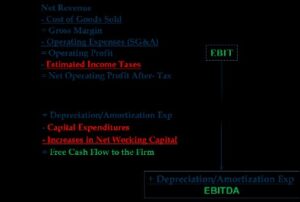What is Account Reconciliation: Process, Example and Types

Account reconciliation should be prepared and carried out by qualified accounting personnel, typically within the finance department. Ideally, it should corporate title be someone who is not involved in the day-to-day transactions that performs it to maintain objectivity and ensure a thorough review. These reconciliation discrepancies happen when human error (like incorrectly keyed information) causes there to be differences between the general ledger and the subledgers. This refers to any additional reconciliations a company needs to make based on particular needs. For example, businesses with a field sales team might reconcile employee expenses payable with individual expense reports.
Missing transactions
You identify deposits and account credits that are yet to be recorded by the bank in the bank statement and add these to the statement balance. This method for account reconciliation involves the use of historical account balance levels to determine the estimated account balance of the statement or accounting record under review. It estimates the actual amount that should be in the account based on previous account activity levels or other historical metrics gotten from previous accounting periods. Analytics review uses previous account activity levels or historical activity to estimate the amount that should be recorded in the account. It looks at the cash account or bank statement to identify any irregularity, balance sheet errors, or fraudulent activity. Reconciliation must be performed on a regular and continuous basis on all balance sheet accounts as a way of ensuring the integrity of financial records.
Errors

By taking advantage of technology and automation in this way, you can save time and avoid duplicate data entry errors. In both cases where mistakes are identified as a result of the reconciliation, adjustments should be undertaken in order for the account balance to match the supporting information. Join the 50,000 accounts receivable professionals already getting our insights, best practices, and stories every month. Versapay’s collaborative AR automation software combines powerful automation capabilities with tools for collaborating with team members and customers, all in one cloud-based platform. Reconciliation in accounting is an important means of keeping an eye on how much money the business is spending each cycle and avoiding any surprises.
Reconciliation in accounting best practices
The account reconciliation process typically takes place at the end of a financial or accounting period and these processes are generally executed on general ledgers. This is one very important cause of discrepancies account reconciliation aims to deal with. This could be in the form of wrong digits, software errors, external errors from the bank, or mistakenly inputting a transaction in the wrong record. The time difference between when a payment or deposit was made and when this transaction is eventually recorded is one reason for discrepancies in accounting records. This was especially so when the physical legal tender was the main medium of exchange and recipients of money needed to get to deposit points to complete the whole deposit process. The first step is to compare transactions in the internal register and the bank account to see if the payment and deposit transactions match in both records.
This step helps with additional independent information to verify the accuracy of the general ledger account balance. Having to compare two accounting records helps a company accurately account for all its transactions. Where discrepancies arise, it helps you pinpoint the exact missing transaction and the accounting officer in charge de minimis fringe benefits of it. Reconciling an account is an important skill that every accountant and business owner should possess. Simply knowing how to properly reconcile an account can prove essential to your financial health as it ensures your financial records are always accurate.
To ensure accuracy and balance, the process of account reconciliation involves comparing the balances of general ledger accounts with the supporting sets of data sources, such as bank statements, invoices, and receipts. Account reconciliation comes in various forms, each tailored to address specific financial aspects and discrepancies within an organization. Understanding the different types is crucial for maintaining financial accuracy and transparency. Whether it’s reconciling bank statements, vendor accounts, or intercompany transactions, each type plays a pivotal role in ensuring that records are consistent and errors are promptly identified and corrected. Account reconciliation is an accounting process, usually embarked on at the end of an accounting period, that makes sure financial accounting records are consistent and accurate. Generally done for general ledgers, account reconciliation involves the comparison of two independent but related records to make sure that transactions and balances correspond with each other.
- But oftentimes when you receive a payment, the customer may have neglected to send remittance advice telling your accounting staff where to apply the payment.
- The most common of both, the Documentation review method involves collating the account details of multiple accounts or statements and reviewing the consistency, appropriateness, or accuracy of each transaction.
- In single-entry bookkeeping, every transaction is recorded just once rather than twice, as in double-entry bookkeeping, as either income or an expense.
- And generating financial reports in Clio Accounting is a breeze, making your life, and your accountant’s life that much easier.
- In the world of accounting, reconciliation is not just a term; it is an essential tool for ensuring accuracy, maintaining financial health, and fostering trust.
Businesses and individuals may use account reconciliation daily, monthly, quarterly, or annually. In these situations, accounting teams greatly benefit from having a collaborative accounts receivable solution, which allows them to communicate directly with customers in a single platform. These reconciliation discrepancies happen when you neglect to capture a few entries in the general ledger but include them in other statements. Although these do not occur very often, where they are spotted, you make amendments in the bank account statement, either by additions or subtractions.
Companies with single-entry bookkeeping systems can perform a form of reconciliation by comparing invoices, receipts, and other documentation against the entries in their books. It involves reviewing each individual transaction to see if the amount captured matches the actual amount spent. Documentation review tends to be more accurate because it’s based on real information instead of estimates. Every company correct spelling for calendarize has its own rules and regulations regarding the frequency of its account reconciliations. Depending on the number of transactions there are to compare, this process can happen daily, monthly, or annually. Once data is gathered from these sources, the software, through advanced encoding, then compares account balances between documents from the different sources and identifies discrepancies.


